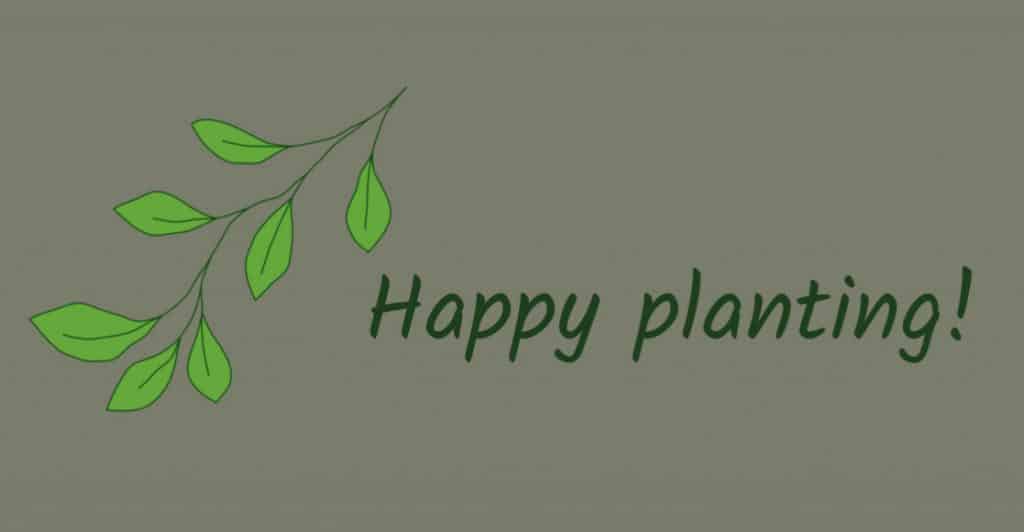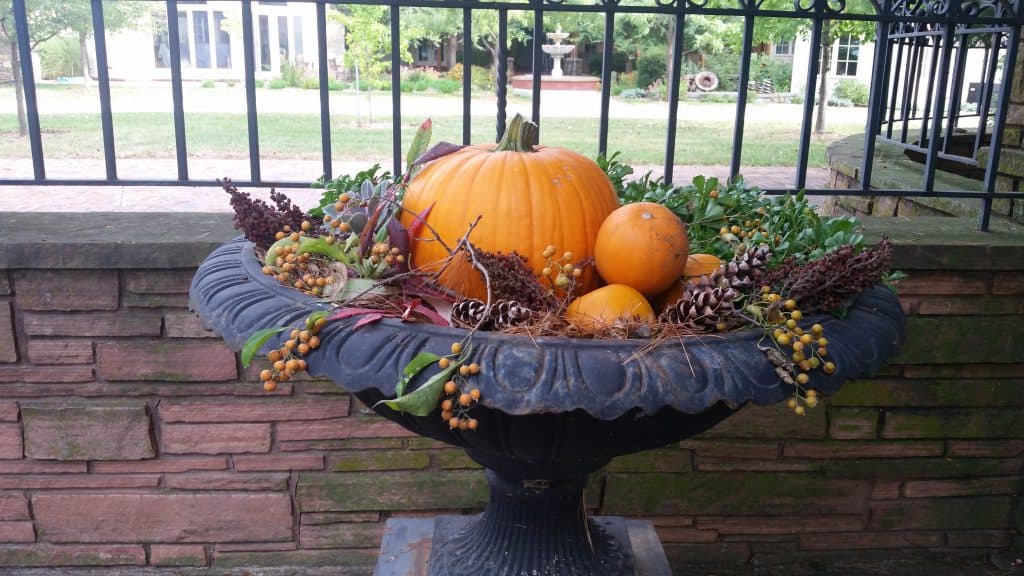
With September just around the corner, now is a good time to begin planning your autumn containers. Planning should be done early to avoid rushing around at the last minute trying to find things.
Plants Best for Autumn Containers
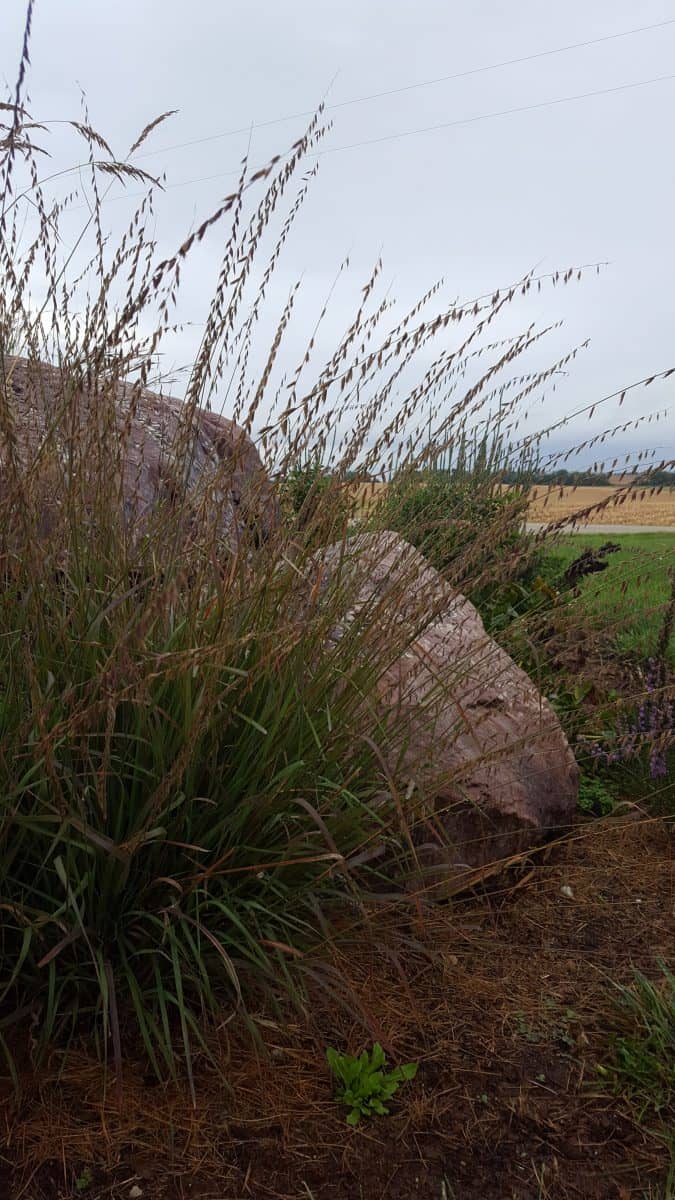
When you are choosing plants for your containers, you need to find things that will survive frost and even freezes. I like to use grasses, perennials, and hardy annuals in my autumn containers. The following lists are the best of each for autumn.
Grasses
- Little Bluestem ‘Carousel‘
- Sideoats Grama
- Sedge ‘Blue Zinger’
- Fox Sedge
- Prairie Dropseed
- Switchgrass ‘Shenandoah’
- Sedge ‘Evergold’
- Blue Fescue
- Northern Sea Oats
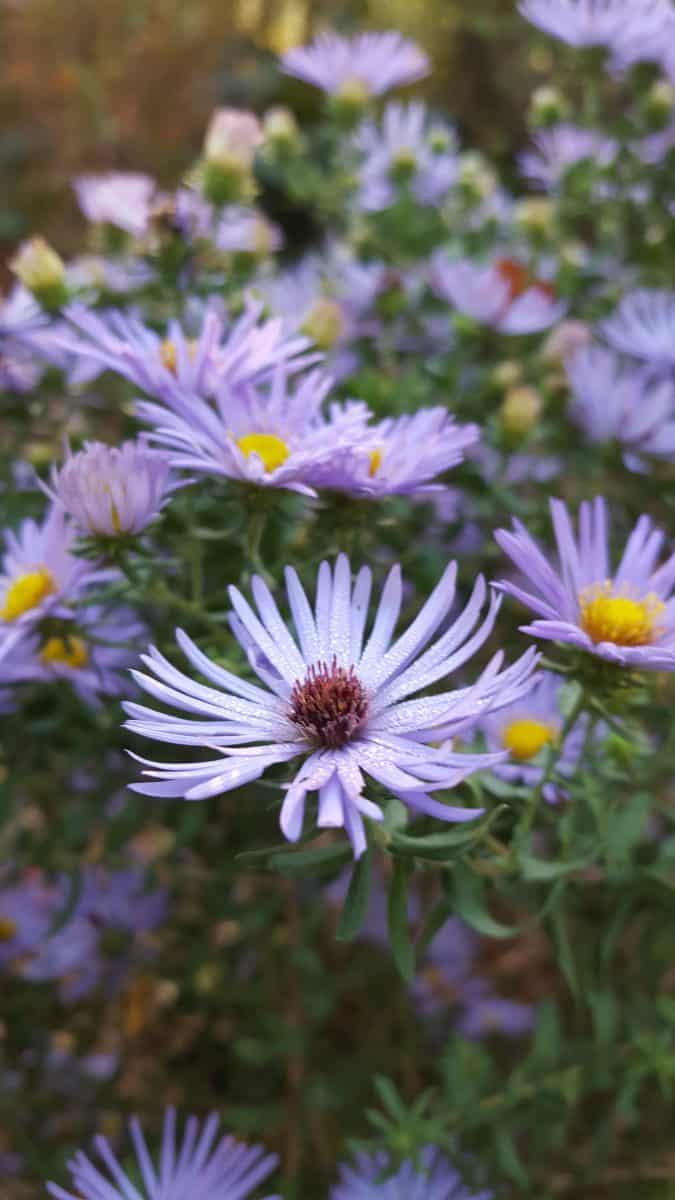
Perennials
- Aster ‘Wood’s Purple’
- Aster ‘Raydon’s Favorite’
- Bergenia ‘Winter Glow’
- Aster ‘Snow Flurry’
- Chrysanthemums
- Sedum ‘Autumn Fire’
- Sedum ‘Frosty Morn’
- Tricolor Sage
- English Ivy
- Ajuga ‘Catlin’s Giant’
- Yucca ‘Color Guard’
- Coral Bells ‘Stainless Steel’
- Coral Bells ‘Palace Purple’
- Autumn Fern
Annual Flowers
- Dusty Miller
- Dinosaur Kale
- Purple Kale
- Ornamental Cabbage
- Stock
- Swiss Chard ‘Bright Lights’
- Mustard
- Pansies
Pick plants that fit not only your budget, but your container colors as well. If you have a large blue urn, do not use colors that clash or blend into the color. For example: with a tall blue urn, I would use coral bells ‘Stainless Steel’ paired with bergenia ‘Winter Glow’, and sedge ‘Evergold’. Once the plants are picked, then you can start collecting the other materials.
Plant Combinations for 5 Container Colors
Blue Containers
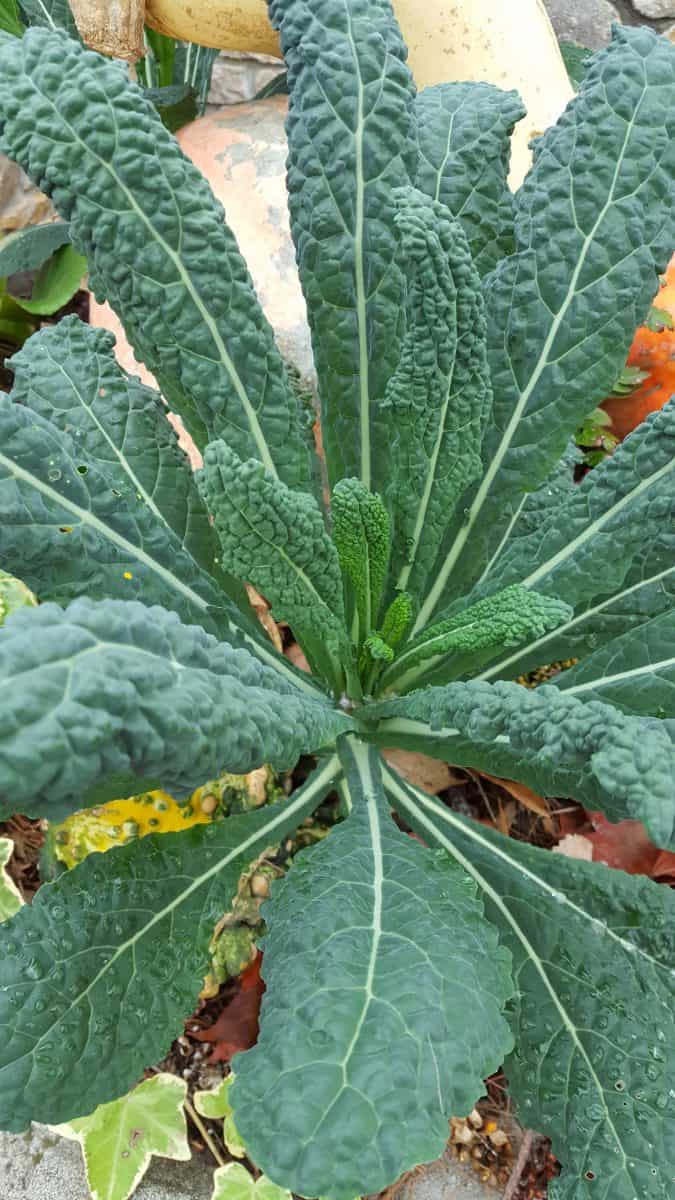
As mentioned above I like to use colors that are not lost in the color of the container. For blue containers, I like to use plants with gold or yellow striping, silver or bronze foliage, and yellow, pink, or white flowers. Orange also pairs well with blue.
Red or Burgundy Containers
For these color containers, it is best to use plants that have bright contrasting colors. Yellow flowering mums, pansies, or sedum work well. I also would pick a white edged sedge or a grass with light colors such as northern sea oats. Use orange in the form of mums, Swiss chard, or pansies.
Silver plants like dusty miller or sedum ‘Frosty Morn’ work with every color container but white.
Black or Bronze Containers
Here is where the dusty miller will really stand out. Silver and black pair really well together. All the colors work well with black except the bronze leaf of ajuga ‘Catlin’s Giant’, or the dark purple of coral bells ‘Palace Purple’.
White or Gray Containers
If you work with large concrete containers, such as I do, you will learn quickly that the best colors for these are anything that stands out against a white background. This eliminates the use of dusty miller, but all the other plants shine out.
Yellow or Green Containers
While pale or light green is not a common container color, you may find a few. But mostly, bright yellow or forest green are the most often colors. Use plants that complement and contrast these colors, but do not blend into them.
I like dark purples, bronzes, and reds for these color containers. Such plants as ajuga ‘Catlin’s Giant’, purple kale, switchgrass ‘Shenandoah’, and mustard work well here. Add in your pumpkins and gourds and it will be a treat to the eyes.
Plant Companions for Autumn Containers
Of course, plants are not the only things used for containers. Who can forget about pumpkins, berries, and the like? These elements add depth and remind us of what fall is about: harvest and Thanksgiving. You can create a harvest centered container with a cornucopia of materials.
Harvested Materials
- Pumpkins
- Gourds
- Winter Squash
- Osage Orange (Hedge) fruit
- Bittersweet berries
- Indian Corn
- Popcorn
- Sumac berries
- Pine cones
- Milkweed pods
- Dried Okra pods
- Cattails
- Lotus seed pods
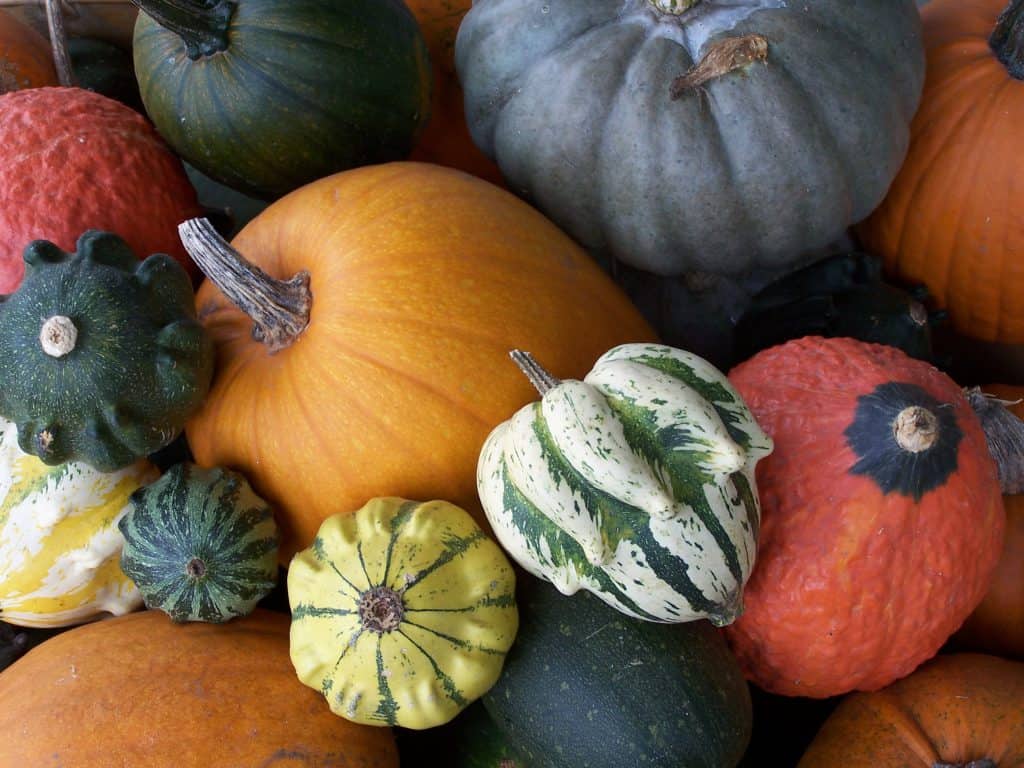
When you begin to put your containers together, have a variety of these materials ready to use. The most important ones are the pumpkins, gourds, and squash, but all the rest can add touches of surprise for onlookers.
Mulch for Your Autumn Container
Mulching your container is a good way to keep the soil from being visible. I recommend a layer or mulch in between plants, pumpkins, and everything else to give it a finished look.
The best mulches for autumn containers are chopped alfalfa, pine needles, straw, and leaves.
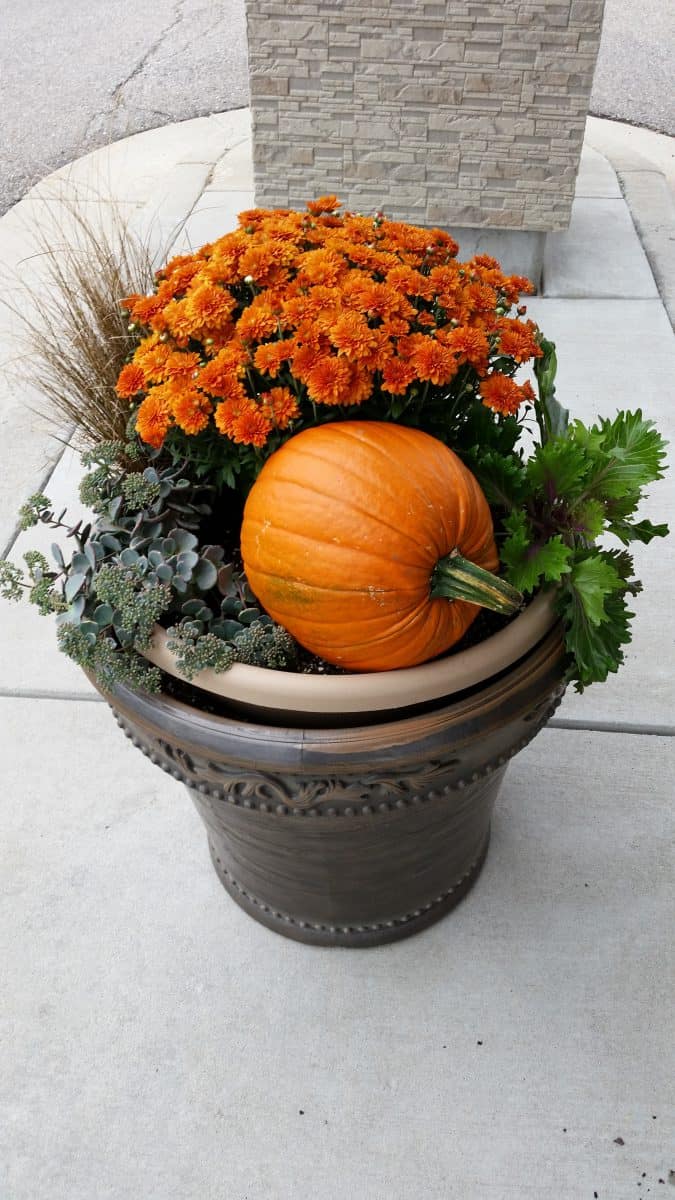
Putting it all Together
Now that you have figured out what plants and materials to use, gather them up for the creation. Start with your largest pumpkins or gourds. Place them a few inches below the soil, if tilting or side-placing them. Otherwise, just set them on top.
Next, add your grasses or perennials. Then plant in the annuals. Once all the plants are in, begin placing smaller gourds, squash, and pumpkins against the plants and in crevices.
Now add your extras: berries, pine cones, cattails, and hedge fruit. Once all these items are placed, add the mulch, them water everything down. You are finished!
